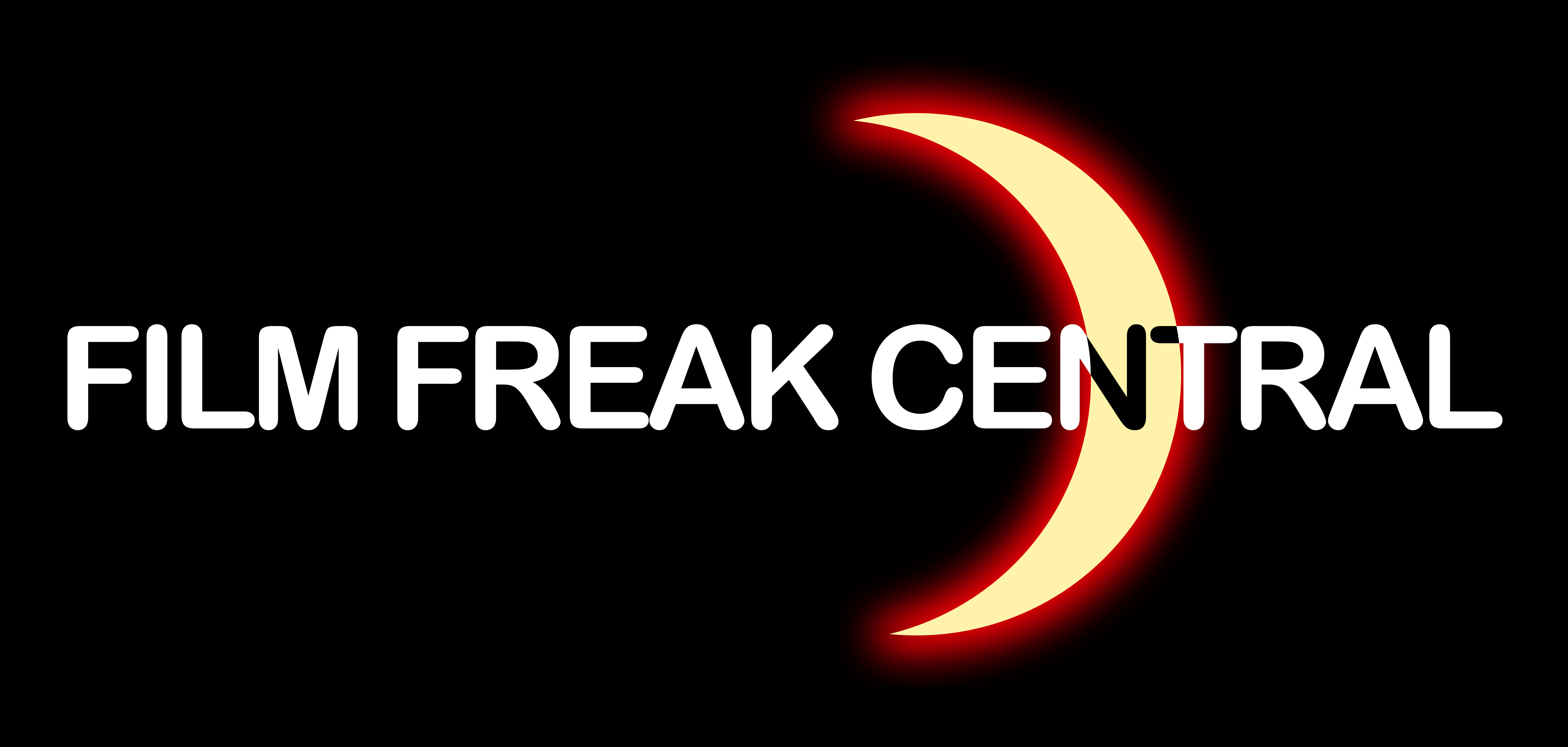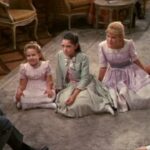****/**** Image C Sound C Extras B
directed by Jonathan Demme
by Walter Chaw I learned about memoir as art watching Spalding Gray in Jonathan Demme’s Swimming to Cambodia. Although I was a freshman in college when I first saw it, I’m not sure that I ever really knew what “memoir” was before, and, since, I’ve been hard pressed to find any examples that measure up to the bar it sets. Swimming to Cambodia also provides an impossible standard for direction, as Demme takes Gray’s “monolog” format (essentially him, alone, on a stage) and turns it into something like an expressionistic piece, something that is at once inside Gray’s mind and inside yours using thoughtful editing choices and clever sound and lighting design. In a year that saw the release of Predator, Full Metal Jacket, The Untouchables, Empire of the Sun, Raising Arizona, Near Dark, A Better Tomorrow II, Angel Heart, Evil Dead II, and RoboCop, it’s a little astonishing to realize the best-directed film is this one with a guy sitting at a table. For what it’s worth, as I was writing my own memoir of a very particular moment in my life, the only readership I really imagined for it consisted of my father and Gray–Gray, who killed himself over water in 2004, and my father, who died a year before that. If the one was the reason, the other was the way.
Open with shots of Gray walking along the streets of Manhattan, left to right–movements of power and in their way as minimal and purposeful as the first couple numbers in Demme’s Stop Making Sense. Gray enters a theatre (we know because we get a glimpse an audience–as much of one as we ever get in the whole of Stop Making Sense), and then we see him setting his notebook–the cover shows Ronald McDonald in some pastoral scene–on a beaten-up table, next to a mic on a little stand and what appears to be a 16oz glass of water. Later, Gray produces an extendable metal pointer, and we see behind him two maps: one of Southeast Asia, the other of Cambodia proper. That’s it. And he starts. And every time I sit down to write this review, I get two lines deep and then stop to watch the film again. It’s compulsive–I can’t stop, and really it’s just Gray talking about his experience shooting a small role in Roland Joffe’s 1984 docudrama The Killing Fields. Demme deviates three times by inserting the only clips from The Killing Fields featuring Gray, which serves the dual function of confirming that Gray was in the movie and offering some small relief from the consuming claustrophobia of Gray’s intensity. When Ebert reviewed Swimming to Cambodia, he talked about what “Hamlet” would have been like from the gravedigger’s perspective; I think it’s a more complete vision than that–more Rosencrantz & Guildenstern Are Dead, where the star of the drama isn’t the Melancholy Dane but the genocide perpetrated by the Khmer Rouge. There’s something terrible in the margins of Gray’s story of his time in Thailand, shooting The Killing Fields–something in the piece aligned with Wordsworth’s “The Thorn” and the “story of place,” how we tend to project a tale on insensate nature, inspired by beauty, and how it is that so often the story we project is one of abomination and pain.
The idea of projections is a good one to apply to Swimming to Cambodia. When I first encountered the film, the effect it had on me was galvanizing. Revisiting it for the first time in a few years, I realize how many of Gray’s tics and affectations I’ve taken on as my own. Swimming to Cambodia is how we dramatize our lives and make ourselves the star of them; it’s about contextualization and storytelling, the chronicling of experience and the attempt to give meaning to what is essentially meaningless. It’s what filmmaking is, boiled to its base elements. It’s myth, and its function is to explain what it means to be human, to be an artist in a world where notions of beauty and ugliness are arbitrarily assigned and tied inextricably to history, experience, interpretation. It’s all evocation–Expressionism, where the images on screen aren’t the manifestations of Gray’s interiors so much as they are made manifest in the audience’s interiors. That’s a phenomenon more commonly associated with reading, and Swimming to Cambodia is finally less theatrical than it is novelistic. It’s best deconstructed, for what it’s worth, in a close reading against Sartre’s Nausea, a novel that is essentially declaration that life only has meaning if the individual wills it–that “perfect moments” only happen when the individual wills them into being through action and the ability to contextualize the experiences that arise from those actions.
Gray sets his scene, foreshadows a moment where he will tell an untruth (the banana doesn’t stick to the wall), and then provides background on not just Joffe’s The Killing Fields, but also the mania that may have made it possible for a portion of a country’s own population to so disengage that it could systematically exterminate another portion. Gray offers his story’s protagonist a motivating purpose: the quest for a “perfect moment,” so that he can graduate to his next opportunity for a perfect moment. He offers the existentialist idea that life is a series of opportunities; he expresses that freedom is the agency of experience, but that freedom, perfection, all of these things, are choices without objective meaning. In Swimming to Cambodia, Gray discovers his perfect moment when he’s in the ocean, too far from the shore. It’s haunting to me that he would die in water 17 years later. It’s impossible, in the end, to regard any of Gray’s work without knowledge of his tragic accident and ultimate suicide. I wonder if it’s even useful to try. The value of the picture, after all, is catalytic, alchemical, and the choice I make in experiencing it in random temporal intervals is acknowledgment that I’m different each time I see it…as, too, are the locations of the film’s “perfect moments.” I had a great teacher once whose favourite question was where a poem “breathed”–the singularity of Swimming to Cambodia is that all of it breathes, but not all at once and differently from person to person. It’s a masterpiece, and, like Gray himself, there have been none its equal before or since.
THE DVD
Swimming to Cambodia receives its first major-label DVD release courtesy of Shout! Factory in a presentation long on anticipation if short on extras. The disc’s only supplement is a new 17-minute interview with Demme in which he talks about the monolog’s journey from the original two-night, four-hour staging to this 90-minute distillation. Humble to a fault in crediting collaborators like DP John Bailey and composer Laurie Anderson with the success of the piece, he touches on the thinking behind some of the filmmaking techniques he used and rightly disparages assignations of the picture as a “documentary.” A nice talking-head that pairs well with Steven Soderbergh’s reflections on Gray for the Criterion Collection, though I would’ve liked more personal reminiscences of what it was like for Demme to work with Gray. The 1.85:1, 16×9-enhanced transfer is a huge upgrade to my VHS copy of the film, of course, but it’s a reminder of not only how bad DVD looks in comparison to next-gen (I hadn’t seen shimmering artifacts in ages), but also exactly how low-budget this project was. The DD 2.0 stereo audio is similarly flawed, with Gray’s voice phasing in and out as he turns from his microphone and any attempts at increasing the volume to compensate for a certain thinness in the track proving ironic and doomed. Shout! could also be more accommodating of hard-of-hearing viewers by including captions or optional subtitles for this film, which is, after all, wall-to-wall dialogue. I’m not complaining too much, mind, merely observing that if someone were to devote time and energy to a Blu-ray upgrade, there is obvious room for improvement.
87 minutes; NR; 1.85:1 (16×9-enhanced); English DD 2.0 (Stereo); DVD-9; Region One; Shout!




